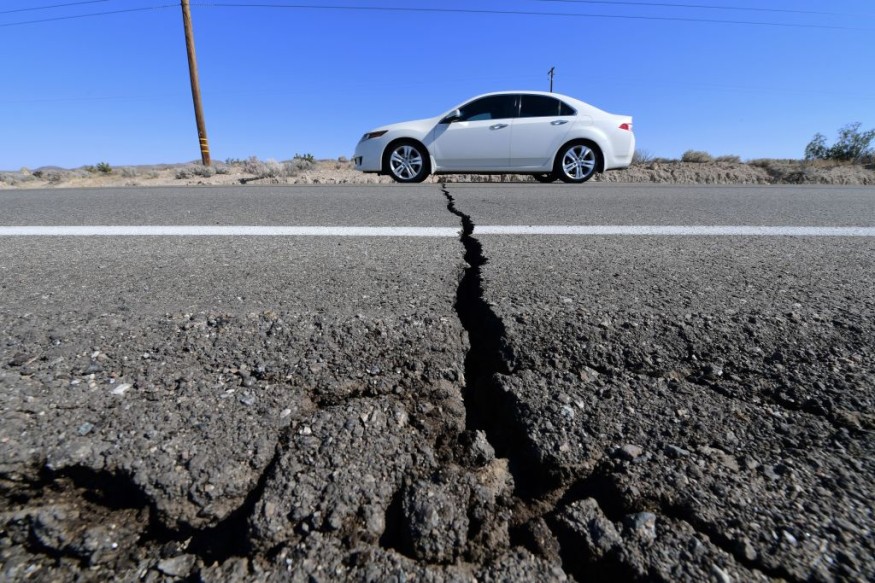California: 4.3 Magnitude Quake Hits Parkfield, Near San Andreas Fault Line

A 4.3 magnitude earthquake has struck near Parkfield, California, as reported by the San Luis Obispo County Office of Emergency Services.
The seismic event occurred approximately 3.7 miles or 6 kilometers northwest of Parkfield, with a recorded depth of about 5.9 miles or 9.5 kilometers, according to information on the USGS website, per KSBY.
Parkfield, an unincorporated community located around 25 miles northeast of Paso Robles in Monterey County, has earned the nickname of the "earthquake capital of California" due to its frequent experiences of magnitude 6 or greater earthquakes.
While some argue that earthquakes occur randomly, a geophysicist from the USGS's Earthquake Science Center commented on the uniqueness of Parkfield's consistent seismic activity, stating, "and we found the one place in the world where it looked like it was regularly."
Situated along the central stretch of the San Andreas Fault, Parkfield is particularly susceptible to earthquakes. The most recent significant earthquake in the area, measuring magnitude 6, occurred in 2004, as noted by the USGS.
Initial reports had suggested the occurrence of two earthquakes at 12:17 p.m., as per the SLO County OES.
However, subsequent clarification from a public information officer confirmed that only one earthquake, with a magnitude of 4.3, struck a few miles northwest of Parkfield.
READ NEXT : Scientists Warn of Massive California Earthquake
Largest California Earthquakes
California is one of the most vulnerable places on Earth regarding earthquakes, said KTLA.
The region has experienced several notable seismic events throughout its history, with some earthquakes in the magnitude range of 6.6 to 7.8 standing out in the nation's memory:
2019
A 7.1-magnitude earthquake struck near Ridgecrest, California. This event was felt by approximately thirty million people across a vast area from Sacramento to Baja, Mexico. The earthquake was accompanied by a series of aftershocks over three days.
1994
The Northridge earthquake, measuring 6.7 in magnitude, hit near Northridge. Notably, its peak G-force acceleration was the highest ever recorded in a North American city with modern instrumentation.
1992
A 7.3-magnitude earthquake struck near Landers. This event was deemed the "largest earthquake to strike the contiguous United States in 40 years" by the United States Geological Survey (USGS).
1989
The Loma Prieta earthquake, with a magnitude of 6.9, had widespread impacts. It caused freeway interchanges in the Bay Area to collapse, interrupted a World Series game, and resulted in approximately $10 billion in damages.
1971
A 6.6-magnitude earthquake struck Sylmar. Its epicenter was near the Magic Mountain amusement park, and its effects were felt across a 300-mile radius along the southern California coast. The earthquake led to the loss of 65 lives and injuries to 2,000 people.
Can We Predict Earthquakes?
No major earthquake predictions have been made by the USGS or any other scientific body, according to American Geosciences Institute.
The methodology for such predictions remains elusive and is not expected to be developed in the foreseeable future.
The USGS concentrates its efforts on the enduring reduction of earthquake hazards through enhancements in structural safety rather than attempting short-term prognostications.
Nonetheless, earthquake forecasts are feasible to a certain extent. These forecasts furnish the likelihood of an earthquake of a specified magnitude or larger in a particular area, like Northern California, within a prolonged time frame.
This window often spans decades or more, and the forecast solely delivers insights into the probability of an event occurring within that extensive timeframe-without certainties regarding its actual occurrence.
Simultaneously, the USGS and other scientists are undertaking endeavors to establish an earthquake early warning (EEW) system in the United States.
EEW systems are not equipped to prognosticate earthquakes; rather, they identify earthquakes in their nascent stages and expeditiously dispatch alerts to regions unaffected by the tremor.
These systems offer several seconds to minutes for preparation, allowing individuals to take cover and plan.
READ MORE : Maui Wildfire Update
This is owned by Latin Post.
Written by: Bert Hoover
WATCH: Can earthquakes be predicted? - From FOX 11 Los Angeles
Subscribe to Latin Post!
Sign up for our free newsletter for the Latest coverage!
















